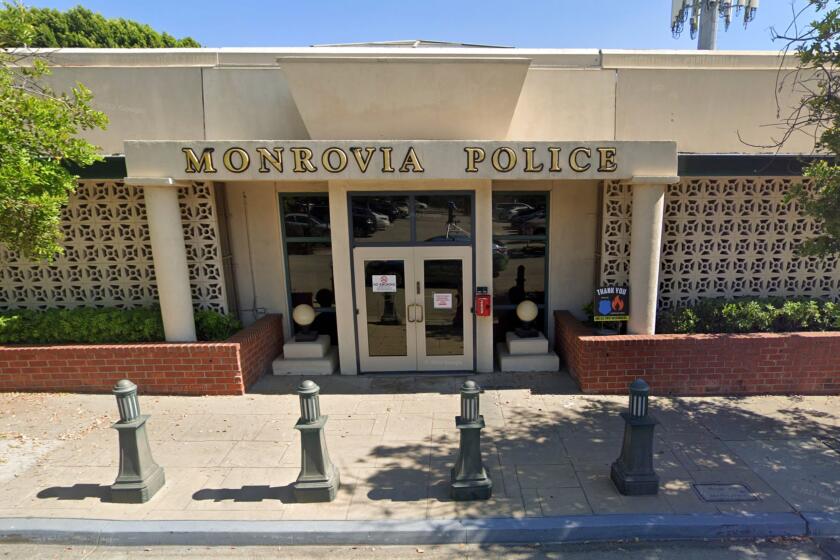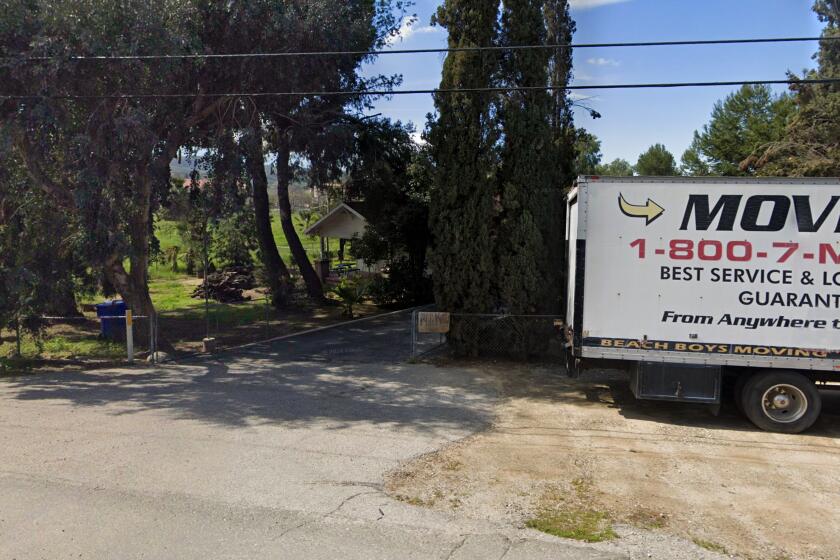Judge Kept the Ball in His Court : Both Sides Say Woolley Was Rough but Knew His Stuff
Until Tuesday, Orange County Superior Court Judge John C. Woolley’s most high-profile judicial decision may have been one involving an apparently lovable pooch named Runaway.
In the midst of a divorce case over which he was presiding, Woolley remembers, he ran into a bitter custody dispute over the dog. His solution was joint ownership, but the arrangement failed so miserably that he eventually found the couple in contempt of court and ordered both of them to jail, giving them “very low marks as human beings.”
On Tuesday, Woolley found himself at the center of a decidedly different kind of dispute--one that undoubtedly has already eclipsed the Runaway ruling in the memories of Orange County court watchers.
Woolley, 51, ruled Tuesday afternoon that a controversial slow-growth initiative should remain on the countywide June 7 ballot. His ruling elated advocates of the initiative and flustered those opposed to it. But attorneys for both sides said Woolley ran a fast and fair hearing on the matter--though there was a little private grumbling that the judge’s take-charge manner occasionally bordered on the overbearing.
As one observer put it, “He tried to give everybody an equal ration of (trouble) so that there would be no question about his being unbiased. I think he had a wonderful time.”
If nothing else, it may have been Woolley’s toughest challenge since his appointment in 1982 to the Superior Court bench by Gov. Edmund G. Brown Jr. Woolley, a Republican, had practiced law in the county for nearly two decades.
Woolley, born in Rensselaer, Ind., moved to Paramount in Los Angeles County with his family at age 10. He was an only child, and said his father died shortly after the move to California, and he worked to support himself and his family from elementary school through his undergraduate days at Cal State Long Beach.
After earning his law degree from USC in 1962, Woolley served for 1 1/2 years as a deputy city attorney in Garden Grove and later set up his own practice there, specializing in financial law and family law. He was president-elect of the Orange County Bar Assn. when Brown appointed him to the bench. He was elected as a judge in 1984.
Attorneys for both sides in the slow-growth case have praised Woolley for his efforts to make the arguments understandable to the public, even when he required them to repeat in open court the assertions they had submitted in written briefs.
At the hearing, the judge had photocopies of significant legal documents distributed to members of the audience who wanted them, and he attached a six-page opinion explaining his reasoning when he released his decision Tuesday.
Earlier in the day, during an interview in his chambers, Woolley had lamented that “no one is really interested in how I make the decision. They’re just interested in what the decision is.”
He said he had taken pains in this case to make the proceedings easy to follow because “the public has to understand why their judges rule the way they do.”
“Trust and confidence in the judicial system depends on it,” he said.
During the hearing, the lawyers agreed, he was evenhanded, if sometimes critical.
“Anything anyone said, he disagreed with,” said one participant in the case. “He didn’t let any attorney who spoke get away with anything. He made them all look bad, because he knew the case so well.”
Attorney Gregory A. Hile, who represented the victorious Citizens for Sensible Growth and Traffic Control, said, “Judge Woolley made it very clear that it was his courtroom, and he wasn’t going to let anybody detract from that.”
At one point, while questioning Hile, Woolley briskly dismissed the first half of a memorandum filed in defense of the initiative as a “call to arms” rather than a compelling legal argument.
“This would be a lot easier if your initiative were a little more specific,” he later lectured Hile, one of the authors of the initiative.
Alvin S. Kaufer, who represented the Building Industry Assn. of Southern California in its failed attempt to keep the initiative off the ballot, also felt the judge’s ire.
In one instance, Woolley grilled Kaufer until he admitted he could not answer a question about a detail in a previous court case.
Kaufer said the judge’s questions sometimes caught him off guard during the hearing.
“It was occasionally frustrating because we didn’t seem to be on the same wavelength, but oral argument is to educate (the judge), and he has the right to ask those questions,” Kaufer said.
Participants in the case had uniform praise for Woolley’s careful preparation in the case.
And the judge made no apologies Tuesday for his brusque courtroom style.
“Keeping the entire proceeding focused on the issues at hand is one of the key responsibilities of a judge,” he said. “The attorneys were very kind in returning to the subject.”
The judge said that “all the lawyers did an excellent job arguing their cases, even though they had a lot of extraneous arguments that they wanted to show me. Those will undoubtedly show up on the ballot arguments.”
Woolley downplayed praise of his sharp wit in the courtroom, saying: “People see you in a certain light. I just try not to mislead you.”
Said Edward N. Duran, the deputy county counsel representing the Board of Supervisors in the case: “I love judges who are annoying, who are smart, who read the material. That’s the kind of judge Judge Woolley is.”
SLOW-GROWTH CHRONOLOGY
Key events in the history of the county’s slow-growth initiative:
* June 13, 1987: Members of Orange County Tomorrow, a citizens organization formed to deal with growth issues in the county, unveil the Citizens’ Sensible Growth and Traffic Control Initiative. At the same time, a special committee, Citizens for Sensible Growth and Traffic Control, is formed to mount a petition drive to get the measure on the June, 1988, countywide ballot. The group also announces plans to push for identically worded initiatives in each of the county’s cities.
* Aug. 6, 1987: After meetings with builders and government officials, sponsors of the initiative announce that they have agreed to drop provisions that would have barred development at major intersections.
* September, 1987: The new initiative is unveiled, and supporters start collecting the approximately 66,000 signatures needed to to qualify it for the June ballot.
* December, 1987: Some copies of the petition have to be recirculated because thousands of voters who received them by mail failed to sign twice, as required by law.
* January, 1988: Local builders start raising money for lawsuits against slow-growth measures throughout the region. Initiative sponsor Tom Rogers and Bruce Nestande, vice president of the Costa Mesa-based Arnel Development Co. and a former county supervisor, meet with county supervisors to discuss alternatives to the slow-growth initiative.
* Feb. 7, 1988: A poll commissioned by The Times shows that 73% of registered voters in Orange County support the slow-growth initiative.
* Feb. 9, 1988: Supporters of the initiative bring petitions bearing about 96,000 signatures to the county registrar of voters as 11th-hour negotiations between initiative supporters and county supervisors fail to yield a compromise.
* March 1, 1988: The Board of Supervisors votes to put the initiative on the June 7 ballot, along with a 500-word analysis of the measure’s impact that would be put together by the county auditor-controller.
* March 3, 1988: The Building Industry Assn. of Southern California, the Orange County Chamber of Commerce and the Commercial Industrial Development Assn. file a lawsuit in an attempt to keep the slow-growth initiative off the June ballot.
* March 29, 1988: Orange County Superior Court Judge John C. Woolley refuses to order the initiative off the ballot.
Times staff writer Michael Flagg contributed to this story.
More to Read
Start your day right
Sign up for Essential California for news, features and recommendations from the L.A. Times and beyond in your inbox six days a week.
You may occasionally receive promotional content from the Los Angeles Times.






